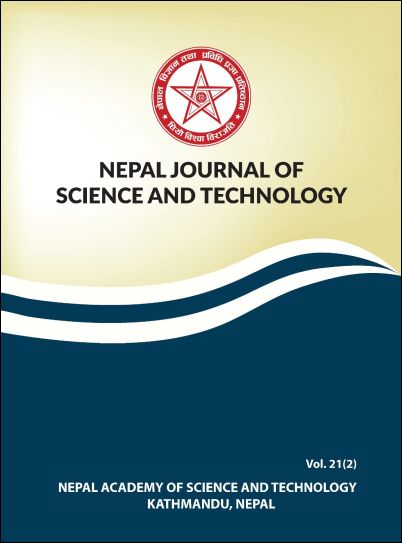Quantification of Heavy Metal Deposition in Lichen Species of Kathmandu Valley
DOI:
https://doi.org/10.3126/njst.v21i2.62357Keywords:
AAS, Bio-indicator, Cadmium, Chromium, Lead, LichensAbstract
Heavy metal pollution in urban areas is the major concern of every rapidly growing nation. The main aim of this study was to determine the heavy metal concentration around Kathmandu valley using locally growing lichens species. The study was conducted by random sample collection method throughout Kathmandu, at the interval of 2km considering Tri- Chandra College as reference point in four geographical directions based on radial distribution pattern. In this study, we quantified Lead (Pb), Cadmium (Cd), and Chromium (Cr) in Pyxine cocoes, Arthopyrenia sp, Caloplaca sp, and Hypotrachya revolute collected from Kathmandu valley. The samples were subjected to Atomic Absorption Spectroscopy (AAS) for heavy metal determination. High concentrations of heavy metals were detected in areas that experience a high influx of vehicles like the Swayambhu area, Pepsicola area, and Lagankhel area. The areas further away from heavy traffic roads showed a significantly low amount of heavy metal concentration. The study provides an insight into the current state of heavy metals in Kathmandu valley, which in high concentration can be detrimental to the health of living organisms.
Downloads
Downloads
Published
How to Cite
Issue
Section
License
Copyright (c) 2022 The Author(s)

This work is licensed under a Creative Commons Attribution-NonCommercial 4.0 International License.
Authors retain copyright and grant the journal right of first publication.




